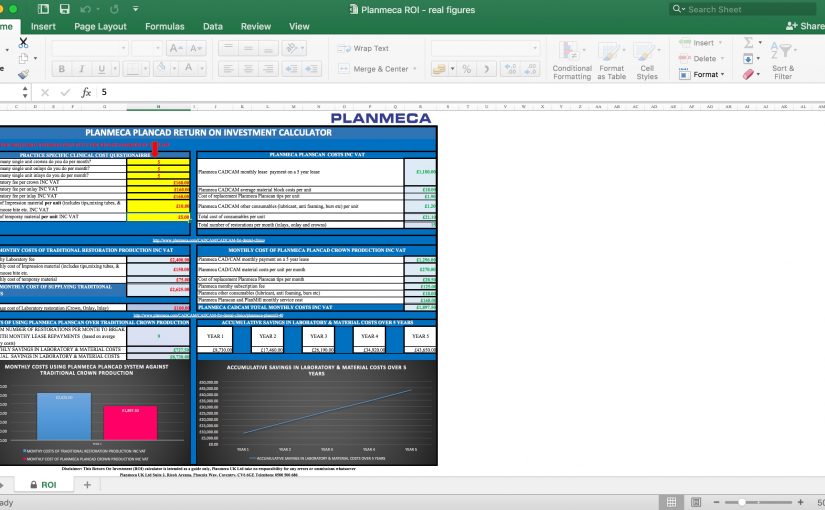Nobody is going to agree to an investment of £60,000+ into digital dentistry without carefully considering the financial consequences.
Even though a dentist may be gung-ho about the technology, there is likely to be a long-suffering spouse, practice manager, accountant or bank manager who is going to ask the question:
“so what is the value case for this?”
Which is accountant speak for:
“if you invest all this money, how on earth are we going to get paid back – and when?”
Very often, a large investment in capital equipment will create what those same accountants call a “J-curve” (imagine the J shape on a graph) – which means that the investment will lose money for a period of time and then gradually climb back to break-even, before ascending into profit.
The team at Planmeca have anticipated these questions and, prior to our Cad-Cam restoration workshops at this year’s BDIA, we collaborated with some of my clients in creating an ROI spreadsheet, populated with real numbers from live practices.
The spreadsheet is included here for you to download and play with your own numbers.
In the example I’ve shown, the practice is currently delivering an average of 15 laboratory-based restorations per month. Actual prices are shown.
The spreadsheet shows a break-even of 9 Cad-Cam restorations per month to cover the lease cost of the digital equipment and the material costs – in the event that the target of 15 is maintained, there is no J-curve – the investment produces a profit from month #1.
The reality is that a team buzzing about digital dentistry and a milling machine whirring way in a patient area will generate even more business and profit.
Enjoy the spreadsheet – insert your own numbers – and if you want the Planmeca mobile showroom to visit your practice – simply email luke.broadhurst@planmeca.com
The argument is compelling.

